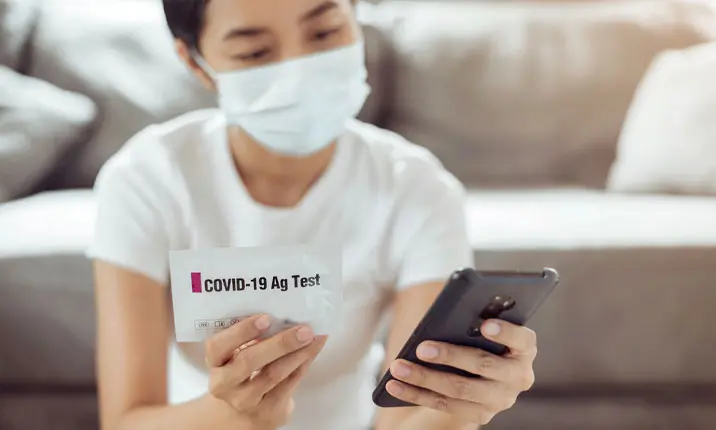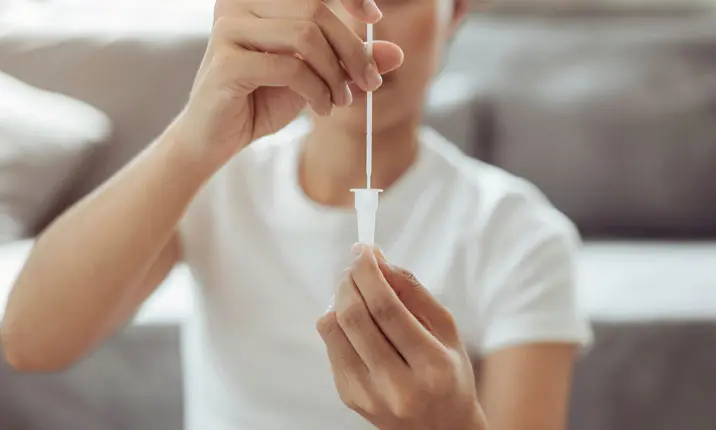Joy Marie Lim
Cố vấn y khoa


Nguồn: Shutterstock
Cố vấn y khoa
Thường được gọi là xét nghiệm ART, bộ dụng cụ tự kiểm tra Antigen Rapid Test (ART) có sẵn rộng rãi tại các hiệu thuốc bán lẻ trên khắp Singapore, và không nghi ngờ gì, đó là một bước tiến lớn trong nỗ lực của quốc gia nhằm kiểm soát sự lây lan của bệnh.
Phù hợp cho sử dụng ở người lớn và trẻ em từ 3 tuổi trở lên, các bộ dụng cụ này hoạt động như một công cụ sàng lọc tự làm để phát hiện sớm khả năng nhiễm COVID-19 để cá nhân có thể tự cách ly ngay lập tức trước khi tìm kiếm điều trị cho bệnh. Có nhiều thương hiệu có mặt trên thị trường, nhưng tất cả đều có tỷ lệ chính xác khoảng 80% trong việc sàng lọc vi-rút SARS-CoV-2.
Những bài kiểm tra tự làm này thường mất khoảng 20 phút hoặc ít hơn để hoàn thành, với hướng dẫn dễ hiểu (với thực hành), và có thể thực hiện trong sự thuận tiện và thoải mái tại nhà.
Đặc biệt đối với cha mẹ có con nhỏ, việc có thể thực hiện những bài kiểm tra này trong môi trường quen thuộc là đặc biệt hữu ích vì trẻ nhỏ có thể xem những bài kiểm tra như vậy với sự sợ hãi hoặc không thích. Đơn giản như nó nghe và thẳng thắn trong ứng dụng, không ai, đặc biệt là trẻ nhỏ, muốn có một que bông được đưa vào mũi.
Để giúp cha mẹ giảm bớt căng thẳng và gánh nặng của việc thực hiện những bài kiểm tra như vậy, dưới đây là hướng dẫn với một số mẹo để giúp quá trình trở nên dễ chịu hơn cho các bé yêu của bạn.
Đầu tiên, điều quan trọng cần lưu ý là khi sử dụng bộ dụng cụ tự kiểm tra ART cho trẻ em từ 3 - 14 tuổi, nên có người lớn giúp trẻ thực hiện kiểm tra.
Nếu bạn đang giúp một trẻ em dưới 14 tuổi thực hiện kiểm tra ART tự làm, hãy làm theo các bước sau:

Một cách bình tĩnh và tự tin, giúp con bạn hiểu những bước bạn sẽ thực hiện để tiến hành kiểm tra. Hãy dành thời gian để giải thích cho con bạn và nếu con bạn đủ lớn, đây cũng là thời điểm tốt để trả lời bất kỳ câu hỏi nào mà chúng có thể có về bài kiểm tra và lý do tại sao nó cần thiết.
Trước khi tiến hành kiểm tra ART tự làm, hãy đảm bảo rằng việc kiểm tra được thực hiện trong một môi trường thoáng đãng như trong phòng có cửa sổ mở. Phòng cũng nên có một bề mặt phẳng và vững chắc nơi bạn có thể sắp xếp các vật dụng của bộ dụng cụ kiểm tra ART.
Một khi bạn và con bạn đã sắp xếp trong phòng, bạn nên làm sạch bề mặt mà bạn sử dụng và rửa tay trước khi kiểm tra. Chỉ sau đó bạn tiến hành đặt tất cả các vật dụng từ bộ dụng cụ lên bề mặt phẳng.
Đây có lẽ là bước khó khăn nhất. Khi bạn cố gắng lấy mẫu từ mũi con bạn, hãy nhẹ nhàng đưa tăm bông vào một trong hai lỗ mũi của con bạn và xoay tăm bông ít nhất 5 lần, trước khi lặp lại trong lỗ mũi còn lại với cùng một tăm bông. Nhẹ nhàng rút tăm bông ra khỏi mũi.
Lưu ý: Khuyến nghị đưa tăm bông vào khoảng 2cm trong lỗ mũi, mặc dù điều này có thể ít hơn đối với trẻ nhỏ hơn. Làm hướng dẫn chung, tăm bông nên được đưa vào cho đến khi cảm thấy có chút kháng cự. Trẻ lớn hơn có thể tự thực hiện bước này.

Đọc và kiểm tra kết quả kiểm tra ART tự làm của bạn theo hướng dẫn của các nhà sản xuất trong bộ dụng cụ kiểm tra cụ thể. Hãy chụp ảnh kết quả của bạn với thông tin cá nhân và ghi chú ngày và giờ nếu bạn cần nộp nó để xác minh. Nếu bạn thấy kết quả không hợp lệ, có thể bài kiểm tra không được thực hiện đúng cách và bạn nên lặp lại bài kiểm tra với một bộ dụng cụ mới.
Sau khi hoàn thành bài kiểm tra, hãy đảm bảo loại bỏ đúng cách tất cả các vật dụng của bài kiểm tra. Hãy vứt chúng ngay lập tức. Cũng đừng quên khử trùng bề mặt bạn đã sử dụng.
Là một người cha mẹ hoặc người chăm sóc, có những bước bạn có thể thực hiện để giảm bớt mức độ sợ hãi và lo lắng cho con bạn. Khi con bạn được chuẩn bị, điều này khiến chúng thoải mái và hợp tác hơn để thực hiện bài kiểm tra. Làm thế nào bạn có thể giúp con chuẩn bị cho bài kiểm tra ART?
Nếu con bạn cảm thấy sợ hãi hoặc không thoải mái, bạn có thể chọn kiểm tra chính mình để chúng có thể chứng kiến trực tiếp quy trình khá đơn giản. Đối với trẻ nhỏ, bạn có thể cần một người lớn khác giữ tay của trẻ xuống trong khi bạn thu thập mẫu từ mũi.
Bạn cũng nên xác định một kế hoạch đối phó có thể góp phần vào quá trình diễn ra trơn tru hơn. Ví dụ, bạn có thể bật bài hát yêu thích của con, cho con dùng thiết bị màn hình khi thực hiện kiểm tra hoặc để con cầm đồ chơi yêu thích của mình.

Nhớ rằng, hãy giữ bình tĩnh và tự tin khi thực hiện kiểm tra. Nếu con bạn bắt đầu hoảng loạn hoặc đẩy tay bạn, hãy cho con bạn thời gian để bình tĩnh lại, hoặc xem xét việc dừng hoàn toàn quá trình kiểm tra.
Khen ngợi con bạn vì đã làm rất tốt! Bạn có thể muốn cung cấp cho con bạn một phần thưởng cho việc hoàn thành bài kiểm tra.
Khi có tiếp xúc với người bị nghi ngờ hoặc đã được xác định dương tính với COVID-19, bạn nên cho con mình được kiểm tra trong khoảng từ 3 đến 5 ngày sau khi tiếp xúc với người đó. Bạn cũng nên xem xét việc thực hiện kiểm tra nếu con bạn có bất kỳ triệu chứng nào của COVID-19 như sốt, ho và mệt mỏi.
Bạn không nên thực hiện kiểm tra ART tự làm nếu con bạn:
Khi kiểm tra COVID-19 tại nhà, cũng quan trọng để chú ý đến ngôn ngữ cơ thể có thể cho thấy con bạn cảm thấy rất khó chịu hoặc đang trải qua mức độ đau cao. Trong trường hợp tai nạn xảy ra trong quá trình kiểm tra, bạn được khuyến khích đưa con đến Phòng Cấp Cứu của bệnh viện để nhận sự chăm sóc y tế ngay lập tức.
Chuẩn bị cho chính mình cũng như con bạn cho bài kiểm tra ART tự làm có thể hữu ích trong việc giúp con bạn giữ bình tĩnh trong quá trình và cuối cùng, thực hiện một bài kiểm tra thành công. Hãy nhớ rằng nếu bạn không chắc chắn về cách thực hiện kiểm tra COVID-19 hoặc có bất kỳ câu hỏi nào, các chuyên gia y tế của chúng tôi luôn sẵn sàng giúp đỡ bạn.